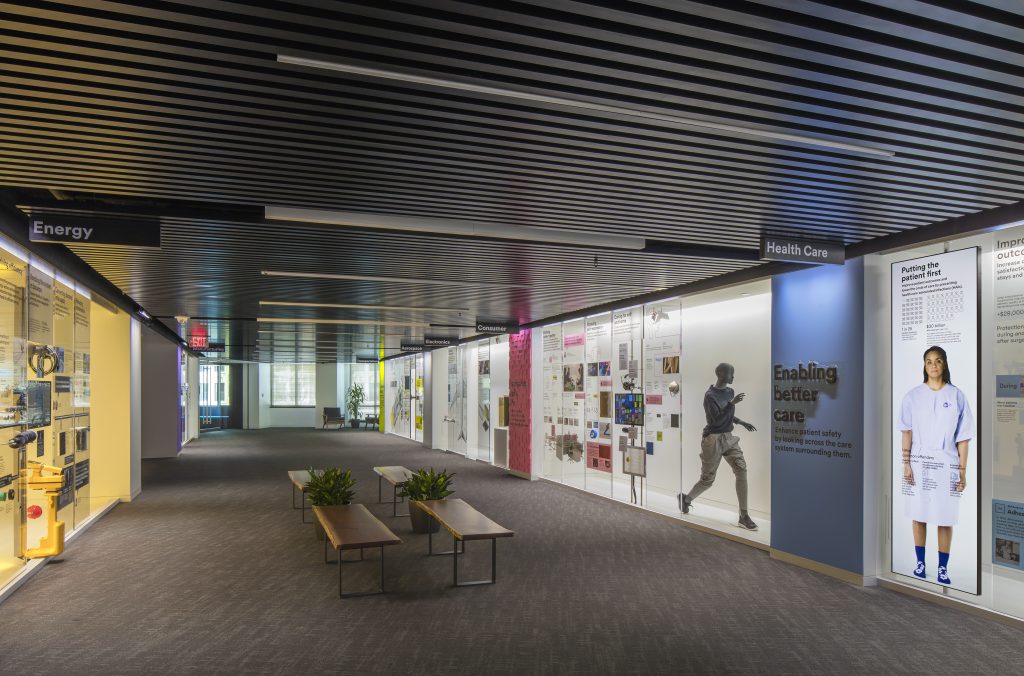Presenter: Adrian Hernandez, pre-program conservation intern at the Smithsonian Institution Archives and The Phillips Collection, Washington, D.C.
Adrian Hernandez contributed to the 2020 Intern Talks held on March 5, 2020 at the 3M Innovation Center, Washington, D.C. He discussed his research on physical remediation strategies for damaged optical disks.

Since February of 2019, he has been working with the Smithsonian Institution Archives along with his supervisor Nora Lockshin, who began the collaborative project with a controlled experiment where a set of 30 optical disks were set on fire in a medium-sized burn room. Hernandez was tasked to assess and recover these disks, which showed a wide range of physical damage. He focused on recordable disks (formats: CD-R, DVD-R, DVD+R) which are among the most commonly used media for users to download, save, or view data.
Hernandez began the presentation by characterizing the anatomy of each format, pointing out the material layers that compose an optical disk and how they slightly differ from one another. He also explained how a disk’s data gets written (burnt) by a computer’s disk-drive through laser technology, “burning” the dye of the bottom-side of the disk and encoding bits—1s and 0s—in a spiral-reading pattern. He continued to describe how optical disks are often damaged through improper handling (scratches, bends, accretions, etc.), aging (bit-rot), and improper storage (dye-fading, warping, delamination, metal oxidation, etc.). He gave importance to hardware-level and software-level remediation strategies, respectively, describing physical surface cleaning and manipulation of how the information is read, stored, and interpreted by the computer through error-correcting codes.
Prior to the test-burn, Hernandez downloaded the file contents for all 30 disks. He obtained individual checksums before and after the fire event to compare and to determine whether a change in the data sum took place. The range of the fire damage varied depending on the condition and location of the disks during the fire exposure. For instance, some disks had been placed inside an archival box, and others were exposed and placed in a box without a lid. Additionally, some had sleeves, cases, and labels, while others did not. In assessing each disk Hernandez considered questions on how residue and dirt would be cleaned, the gravity of possible warping, and for those with adhesive labels, considering their potential delamination during the reading process. All labels were seen as stable and left alone, in part due to timing constraints.
Hernandez’ examination began by conducting cleaning tests prior to treating the disks since scratches, dirt, and oils can hinder the reading process of the drive by blocking the laser. On spare control CDs, he applied lamp black to simulate the soot transfer that occurs in the handling and recovering of materials after a fire. Knowing that all cleaning methods can lead to scratches on the polycarbonate surface of the disk, special attention to the direction of existing scratches was key to Hernandez’ process. In his research, he learned that recovering information on a concentric scratch is more difficult than a scratch in the radial direction, which offers more flexibility for addressing any damage with error-correcting codes. Hernandez’ condition assessment led him to identify the major types of damage (soot accumulation and water spots) and three different treatment scenarios for:
- disks inside the archival box, which suffered no damage,
- fire exposed disks with no label, and
- fire exposed disks with a label.
For case 1, where dust or small smudges (such as fingerprints) were present, a dry clean wipe for treating the surface sufficed. For case 2, the surface was vacuumed with a hake brush, wiped with water and then wiped with isopropanol. While for case 3, a dry soot-sponge was used to clean the side that had a pressure sensitive, adhesive label. As a result of his research and treatments, he was able to confirm that his workflow had appropriate and effective tools to treat fire-affected optical disks. Additionally, it served him in the verification process where he inserted the disks that exhibited the best condition moving down the workflow to those with the worst condition into the disk-drive. This was part of protecting the disk-drive prior to reingesting the treated disks by confirming that they were balanced and did not present warping. Lastly, file checksums were compared and showed no alteration, suggesting that the controlled fire did not have a considerable effect on the readability, dye, or metal layers of the disks.
Hernandez finished his presentation by thanking his supervisor, WCG, and SI Archives while summarizing his next steps. He stated how the challenges presented in his treatments have motivated him to continue researching and intends to help update procedures on literature that is 10 to 20 years old. He sees this as a necessity and wishes to share his findings in the SI Archives blog and the AIC wiki page for optical disks. He closed by answering questions and talking about a potential project to treat a disk that was severely warped where he might need an oven for reshaping.
You can see the 6-minute fire and read more about the performed test-burn in the Smithsonian Institution Archives blog.
Summary by: Daniella B. Villamil, pre-program conservation intern in Time-Based Media at the Hirshhorn Museum and Sculpture Garden, Smithsonian Institution, Washington, D.C.